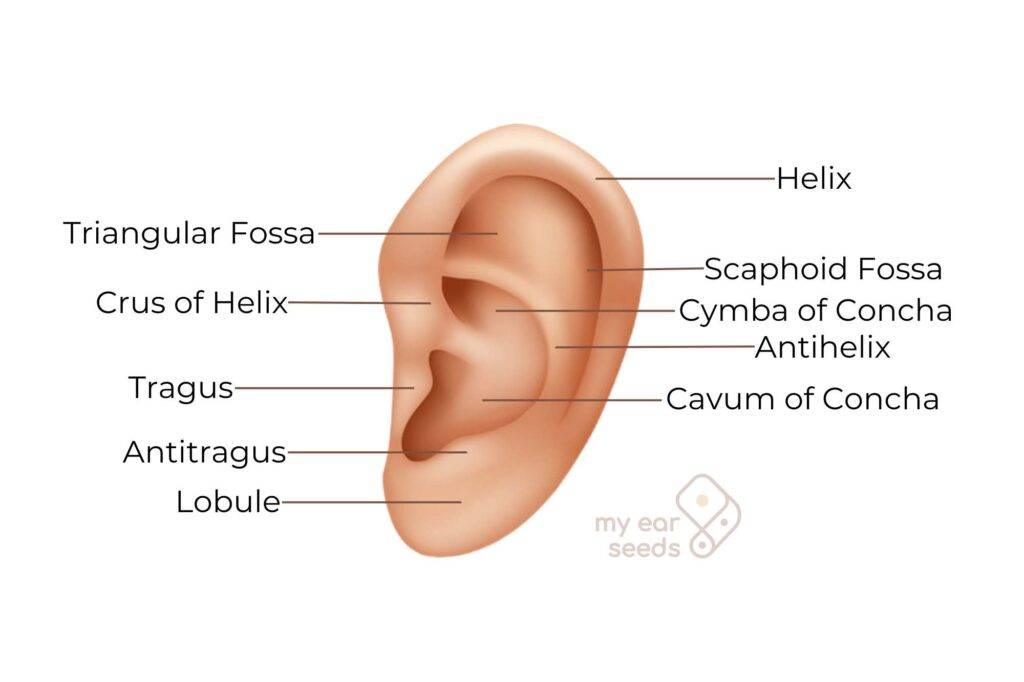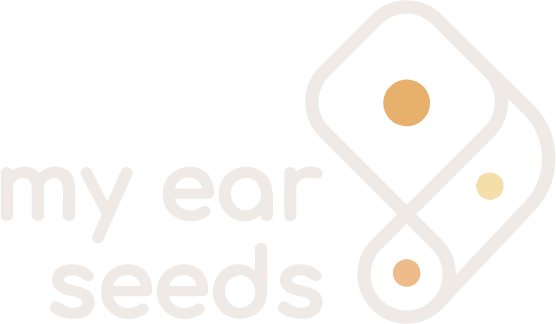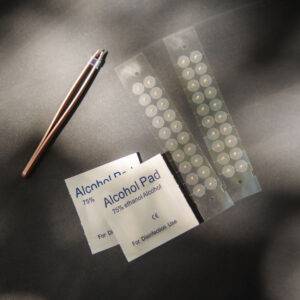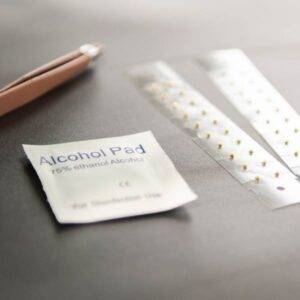Us: “ChatGPT, explain outer ear anatomy, but make it fun.”
ChatGPT: “Uhhhh…” OK, this didn’t really happen, but just for kicks, we really did put this prompt into ChatGPT, and it started off with, “Alrighty then! Let’s take a wild and wacky journey through the amazing world of outer ear anatomy. Get ready for an ear-resistible adventure!” Then it proceeded to write a jingle about both inner and outer ear anatomy. In other words, it didn’t follow our instructions.
Here’s why we’re so focused on outer ear anatomy
Ear seeds aren’t intended for use inside the ear, so we fired ChatGPT and will do our best to make this outer ear anatomy guide interesting for you. Truth be told, our background is in research, psychology, and marketing, so we bring a different approach and perspective.
Namely, we want auricular acupressure to be as accessible as possible. We don’t feel like the average person connects with the whole ear seed thing when we throw around words like “tragus” and “helix” and “vagus.”
You science nerds will appreciate this article, though. And hey, even if you’re not a self-proclaimed “science nerd,” read on.
3 reasons why knowing outer ear anatomy is useful
Whether you’re an anatomy or trivia buff, or whether you learned just enough anatomy in school to get by, understanding the anatomy of the external ear as someone who uses ear seeds is valuable for a few reasons:
1. Precise placement of your ear seeds
Knowledge of outer ear anatomy helps you be more accurate and strategic when placing your ear seeds on specific acupressure points. This is because different parts of the outer ear correspond to various body functions and conditions. When you’re more precise, your ear seed treatment becomes more effective. Proper placement based on ear anatomy can lead to more pronounced results.
2. Safety of the ear seeds
Being aware of the outer ear anatomy helps you avoid sensitive areas, such as the ear canal or fragile cartilage, when you’re applying your ear seeds. This helps avoid one common complaint about the ear seeds: that they hurt.
3. Enhanced ability to discuss and understand auricular therapy
Do you ever think you might want a virtual consultation with one of our ear seeds coaches? During that meeting, you and your coach will be able to communicate easier over a video call if you two are on the same page and can discuss outer ear anatomy with ease.
Alternately, if you’re reading auricular acupressure point content that doesn’t include diagrams, as long as you have written instructions based on anatomical reference points, you can in many cases get “close enough” to any given point on the ear. At least you’ll be closer than you would be if you don’t know your “concha” from your “fossa.”
Let’s dive into the 10 main parts of outer ear anatomy
Alright, at this point, it’s time to take the swim floaties off, put on the goggles, and get your head under water because we’re doing this thing: outer ear anatomy 101.

Outer ear anatomy from top to bottom (more or less):
Helix: The very outer curve or ridge of the ear.
Triangular Fossa: The inner ridge of the top part of the ear that’s on the side of the eye, not the side of the back of the head.
Scaphoid Fossa: The inner ridge of the top part of the ear that’s on the side of the back of the head, not the side of the eye.
Crus of Helix: The part of the helix on the side of the eye where the helix ends.
Concha: The depressed or recessed parts of the outer ear. Cymba is on the top; cavum is on the bottom.
Antihelix: Like the curved helix that runs around the border of the ear, but this one is the inside ridge that borders the concha.
Tragus: The cartilage that is external to and borders the recessed cavum of the concha. Tragus is the one on top; antitragus is the one on bottom.
Lobule: The earlobe (let’s just make this one easy and call it that, for crying out loud!).
Curious to know how all of these different components function? That’s an article we’ll have to save for another day, but Verywell Health covers the topic nicely for your pleasure reading in the meantime.
To sum it up
Fortunately for you, there’s no quiz at the end. But we hoped you learned a lot and will study and start to get familiar with these foreign anatomy words and concepts. To truly become an ear seed pro, we recommend mastering outer ear anatomy terms, at least just these primary 10 included in this article. You never know when knowing these parts of the external ear will come in handy.
And if you made it here to the end, well, happy ear seeding, you science nerd!


